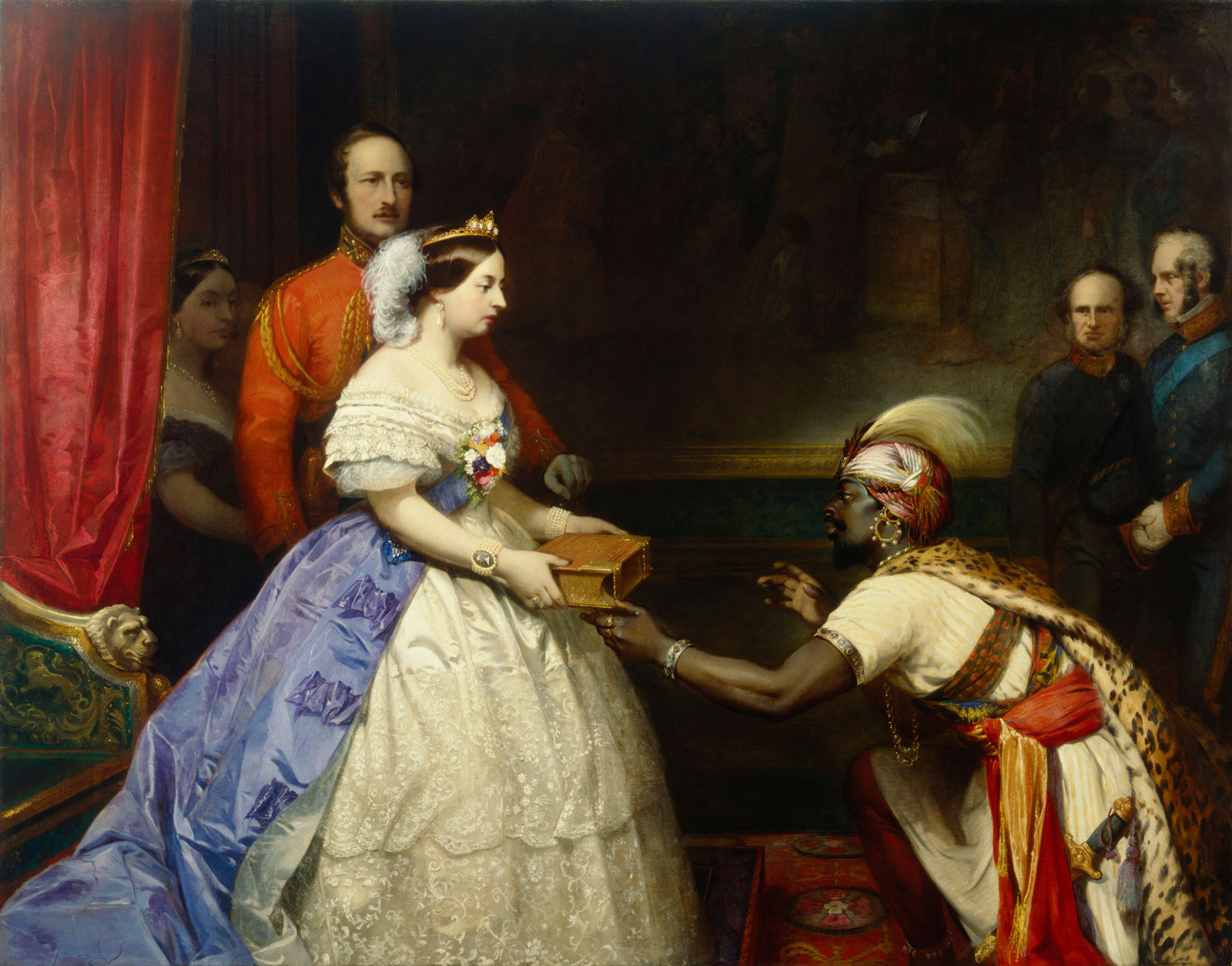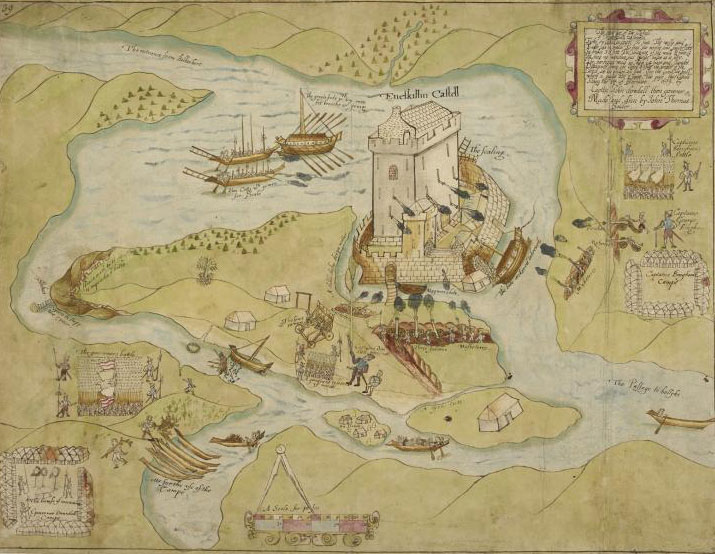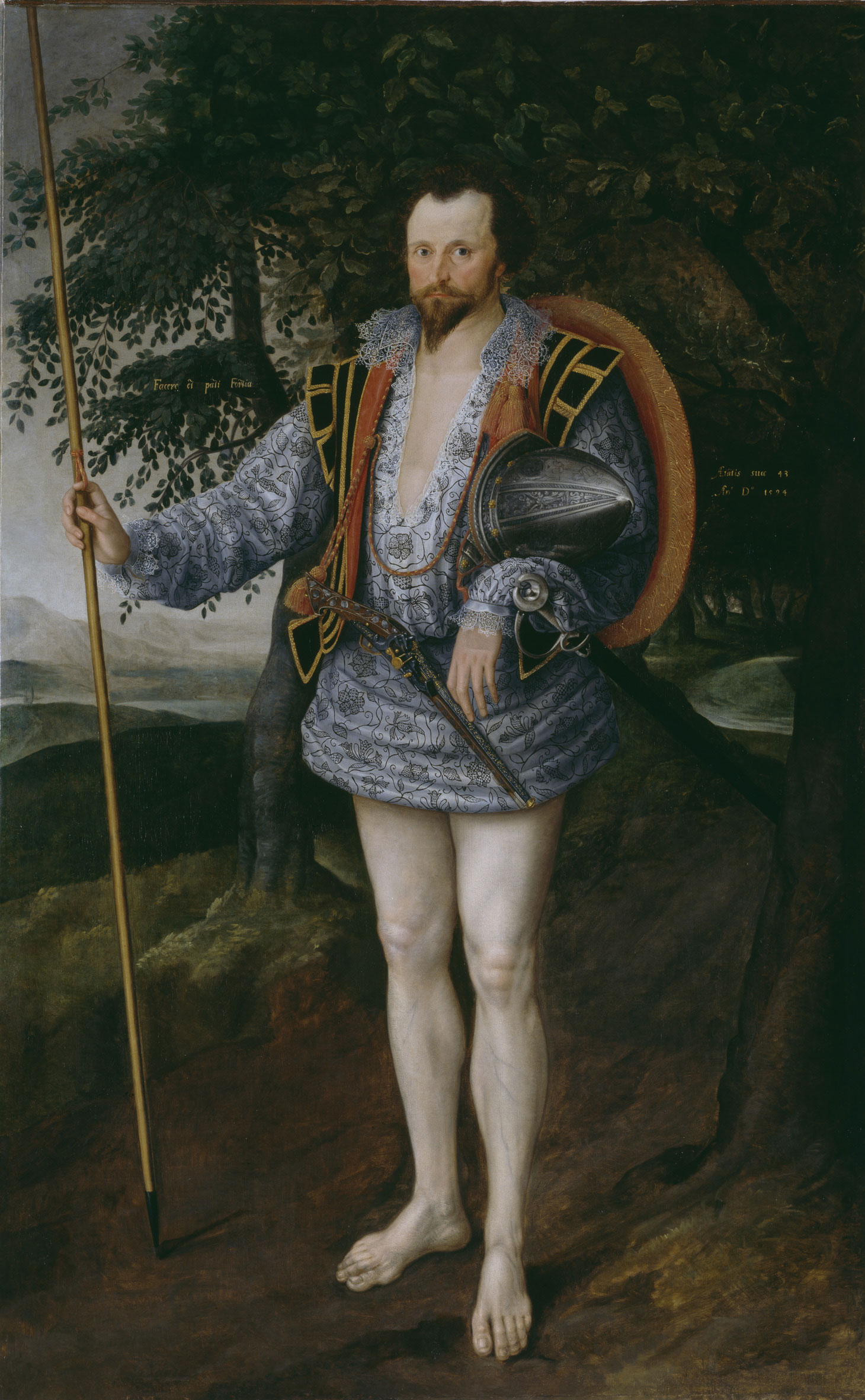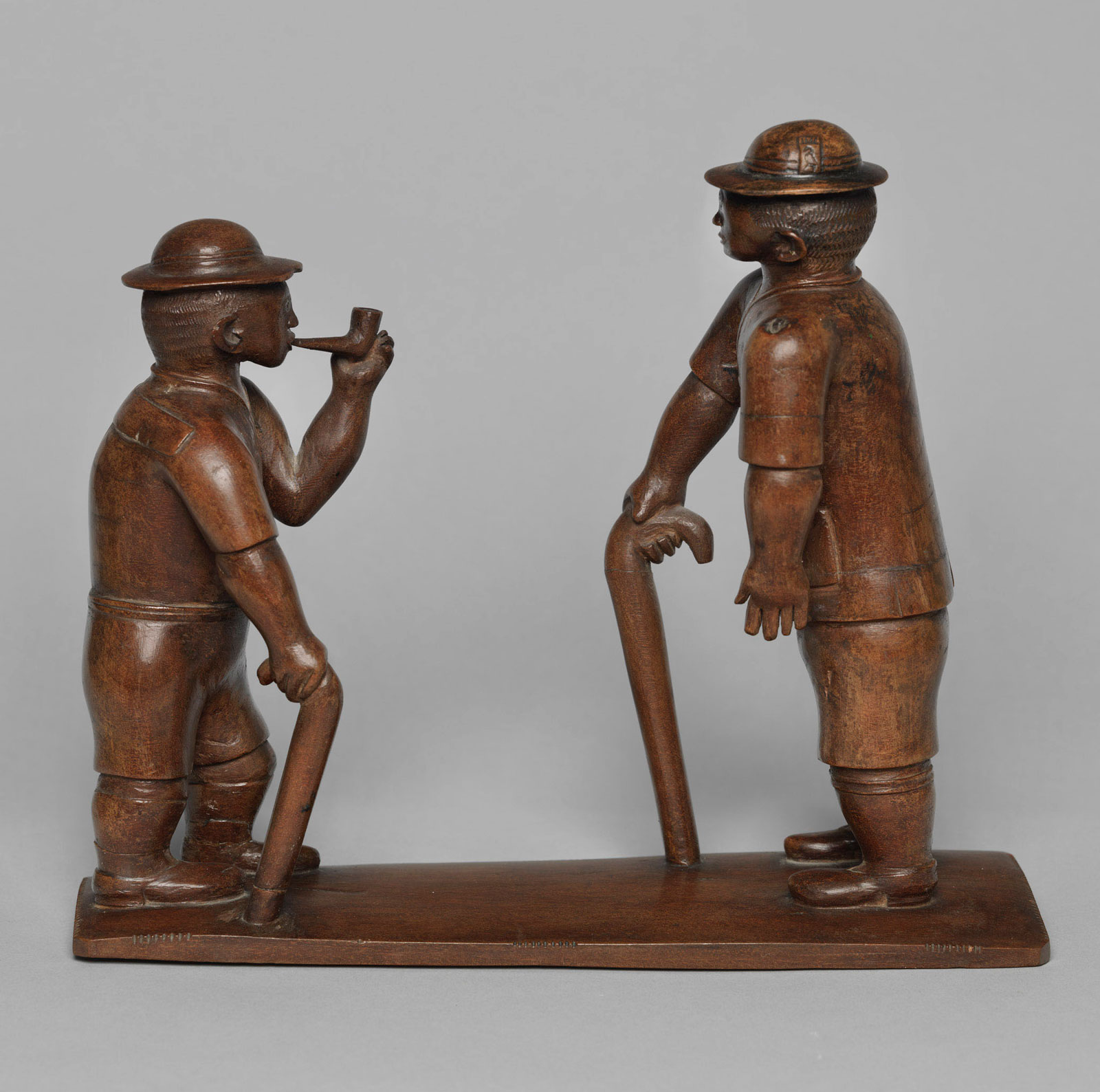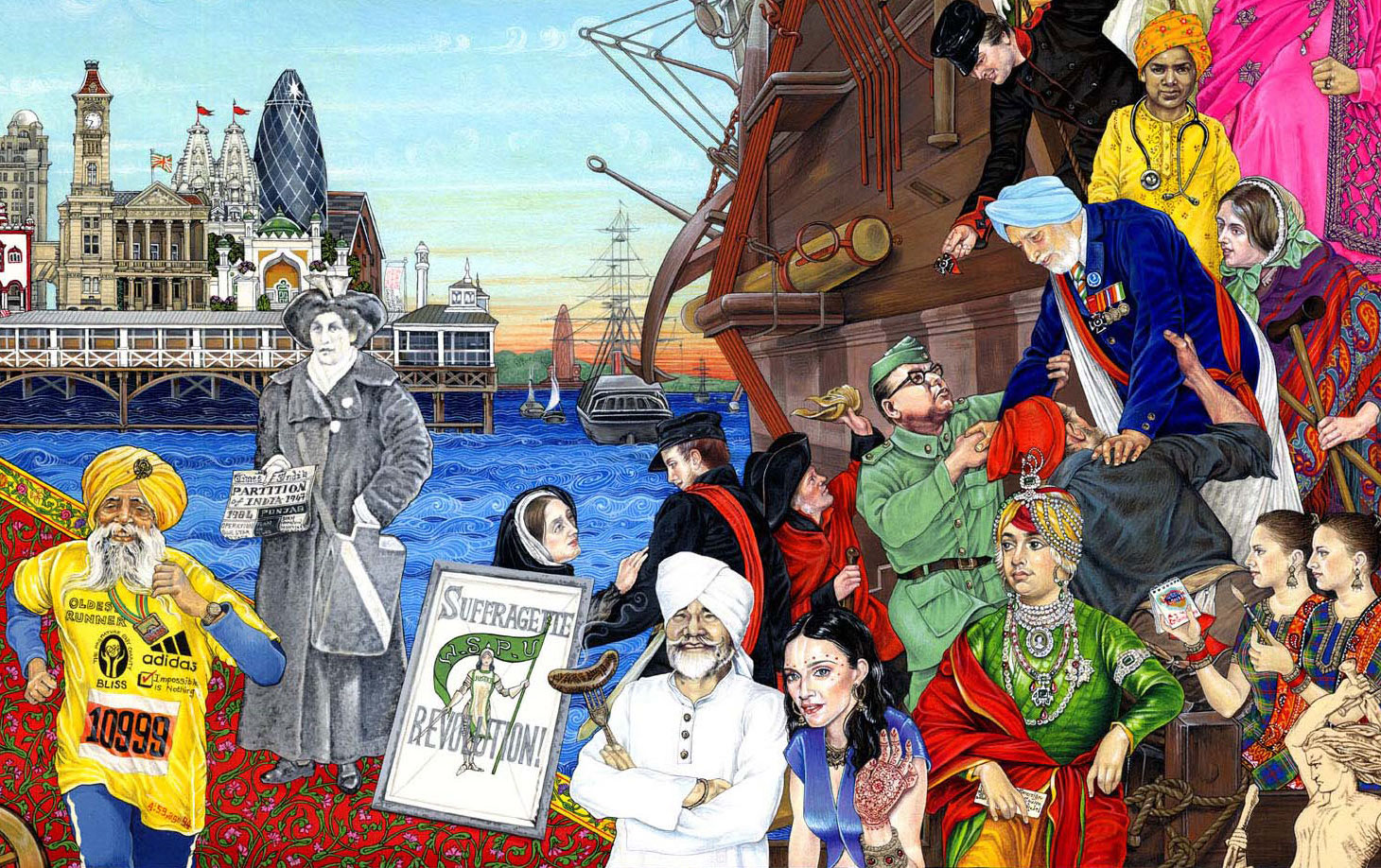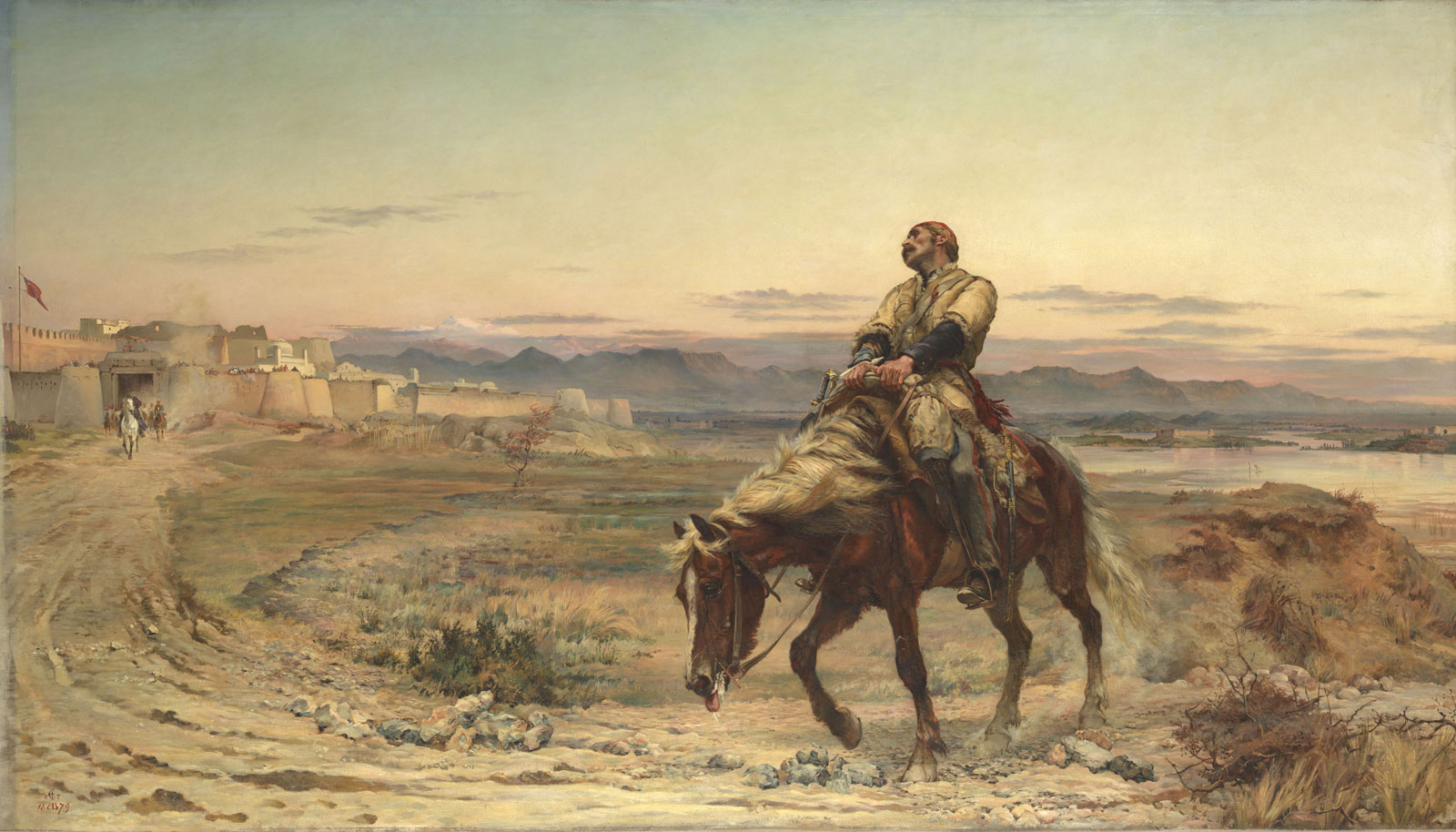It’s brave of Tate Britain to mount an exhibition called “Artist and Empire” when we are constantly mumbling apologies for Britain’s imperial past—for wars and slavery, exploitation and looting, religious and cultural oppression. Not that this show is a celebration. By its own account it is rather an attempt to show how artists have responded to the history and ethos of empire over the last five centuries, and to address its legacy “not just in public monuments, but in social structures, culture and in the fault lines of contemporary global politics.” Ambitious, no doubt. But the presentation has an uncomfortable diffidence. I went on a drizzly December day with a clever, sassy friend, who immediately nudged me as we read the first labels, raising her eyebrow at the evasive historical detail, the fudging, politically correct phrase.
This raises the question of how much one can appreciate an individual work of art, or indeed a genre, when the context is so dominant. The first room, for example, is filled with maps, many showing the spread of pink across the globe. It begins with a vivid watercolor diagram of the siege of Enniskillen Castle in 1593, a part of the English campaign to capture the Ulster province of northern Ireland, the beginning of colonization—a land-grab near to home. It feels embarrassing to admire—as I couldn’t help doing—the clever sketches of little groups of musketeers and the beautifully drawn boats with their siege ladders on board, in the knowledge of the centuries of trouble that lay ahead.
Next to this hangs Henry Popple’s huge, ravishingly beautiful 1733 map of the East Coast of North America, from Newfoundland to below the Gulf of Mexico, showing the British colonies. The label tells us that the founding fathers kept this after the signing of the Declaration of Independence in 1776 even though it was now “redundant.” We were puzzled—how could such an intricate, careful map be redundant? The colors of possession had changed, but the creeks and inlets, the forests and mountains remained, regardless of politics. And of course they kept it, not only for its beauty but for its reminder of what they had won.
There is another side of imperialism here—a sense of wonder, as the eyes of Europe were opened to the myriad beauties of distant lands, evident in zoological and botanical paintings of new species: a tall, serene crane from India; colorful birds and fish from China; and a spectacular spotted pink fungus from south-east Asia named after Sir Stamford Raffles, the British governor of Java and founder of Singapore.
This is in stark contrast to the powerful issues of meaning and reception provoked by a room aptly named “Imperial Heroics,” where group after group of soldiers appear, braving violence and extremes. These include famous propagandist works: Benjamin West’s The Death of General James Wolfe; Elizabeth Butler’s The Remnants of an Army, showing the only survivor of the British army after the disastrous 1842 retreat from Kabul during the first Afghan war; Joseph Noel Paton’s tear-jerking women and children in the “Black Hole of Calcutta.” On one wall a solemn Victoria offers a Bible to a kneeling African prince as The Secret of England’s Greatness; opposite, in Edward Armitage’s Retribution, a huge, muscular Britannia rams a sword into an Indian tiger. These are appalling images in all senses. Yet artists made good money out of such paintings, a reminder of how art is driven by the market: in this case by Victorian manufacturers and provincial corporations rushing to show their pride in empire.
As the history unfolds, we also see the desire not just to relish but literally to clothe oneself in conquest. A striking set of portraits shows British bigwigs garbed in what they regarded as “native dress.” Boy, how these men loved dressing up, putting on a turban or a Native American headdress. And while Marcus Gheeraerts’s ruthless Elizabethan soldier Captain Thomas Lee (1594) is bizarre in his bare-legged stance as an Irish soldier—he had fought in the Ireland campaigns—sometimes they seem to have understood what they were doing. A glowing Van Dyck of William Fielding, probably painted shortly after his return from travels in Persia and India (1631-1633), shows the portly, grey-haired earl wearing a pink, gold-striped kurta and pajamas in a composite British-Indian landscape and looking thoroughly at home.
But what did it mean to be “at home” in these colonized countries? In India in the eighteenth century, before evangelical missionaries and politicians began to demonize Hindu culture, there was considerable fraternization and inter-marriage. The German-born Johann Zoffany (1733-1810) was one of many artists who traveled to India to paint the nabobs, and his joyful, witty paintings catch the spirit perfectly. A century later, John Griffiths lived and taught in Bombay for many years, and his pupils, adopting Western styles, produced haunting portraits like Manchershaw Pithawalla’s The Houseboy (1898). By contrast, African artists looked quizzically at the British officials and missionaries, portrayed in vigorous, comical wooden statues wearing bowler hats, riding bicycles, smoking pipes.
Advertisement
Yet the atmosphere surrounding the work of all these artists is ambivalent, uneasy, shifty. And there are moments of real shock. I stood before the case containing the bronzes of royal heads by Edo artists, looted in the “Punitive Raid” on Benin City in southern Nigeria in 1897, and found myself saying out loud, “They should go back.” Many other Benin trophies were sold on the auction circuit, and it was a kind of confirmation to find, in the last room of all, plates from Tony Phillips’s 1984 etchings of these Benin bronzes making the same point. Yet Phillips also suggests—in a quote in the show’s excellent catalogue—how the great bronzes speak to us across the centuries, “even after the plunder, the dispersal, and the re-presentation in alien environments.”
While the curators have tried to show artists inspired by a mixing of traditions, the examples, on the whole, aren’t strong enough. The only major paintings to stand out are two great Sidney Nolan scenes retelling the story of Eliza Fraser’s life with the Butchulla people of what came to be known as Fraser Island off the east coast of Australia, and her “rescue” by a convict. These are canvases that challenge conventional notions of the “primitive,” bringing together the landscape, the history, and the power of aboriginal rock drawings. We have to wait until the final room to see how contemporary artists handle this complex legacy. And in this room, too, women artists come into their own.
The exhibition ends with works that throw the fraught heritage of empire back at us. One is a four-panel painting by Sonia Boyce, Lay Back, Keep Quiet and Think of What Made Britain so Great (1986). Remembering school history lessons and her “hollow feeling that all these English kings–and fewer queens” were absolutely remote from her life as an east-London girl of West Indian parentage, she adopted a Victorian format, echoing Rossetti’s The Beloved. Within a background of blood-red roses like a William Morris design are cross-shaped monochrome panels, like public memorials of grief: Cape Colony, India, and Australia. These are replaced in the final panel with a woman’s face from the Caribbean, a note of defiance, hope, and change. And hope glimmers too in the dazzling work by the Singh Twins, EnTWINed (2009). With their wit and imagination, the twins, who are British-born Sikhs and the children of migrants, have created a critique of Victorian paintings of emigration and conflict, combining the intricate designs of Mughal miniature art with a dry commentary on tradition and modern life. Everything is here, from soldiers and suffragettes, to football and skyscrapers and Bollywood films.
So—or so it seems—we are supposed to leave these artists of empire on a cheerful note. But as impressions settle, that unease remains. One or two critics have damned the show as static, stuffy, and academic, yet its boldness and ambiguity—reflecting the mix of pride and shame in our imperial past—is mesmerizing. “Artist and Empire” is not an exhibition to “enjoy,” but it is thought-provoking, humbling, and disconcerting. I’m glad I went.
“Artist and Empire” is showing at Tate Britain in London through April 10, 2016.


